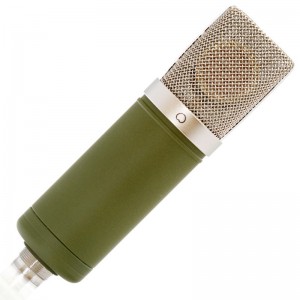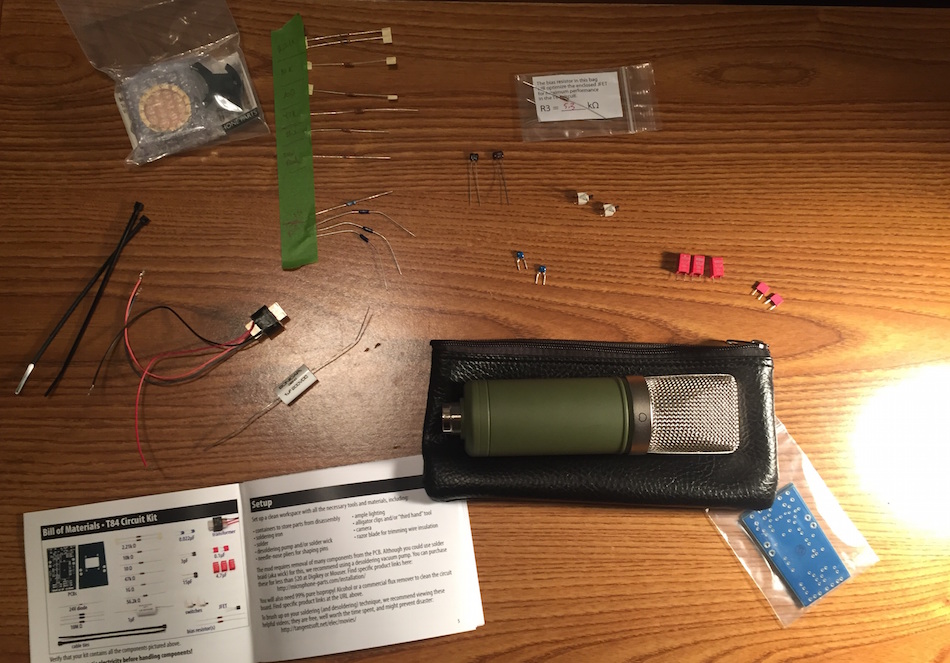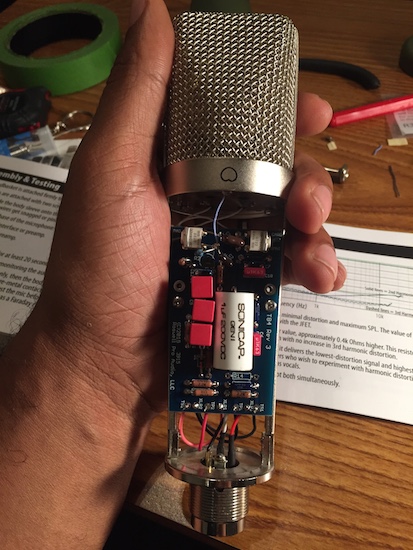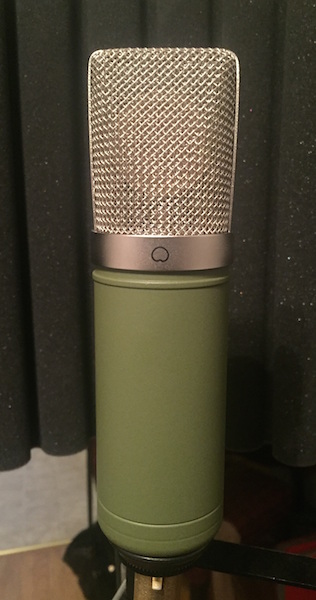DIY Gear Review: T-12 Microphone Kit from Microphone-Parts.com
“Modding” gear has been a pretty common practice throughout the years, and many engineers have sent out some of their gear to experts who replace components with the aim of increasing performance.
But the folks at Microphone-Parts.com have a different model: They send you the parts and let you do the operation yourself. Or, better yet, you can order a full kit to build your own high-quality microphone from scratch.
Matt McGlynn, best known until now for his comprehensive microphone database at RecordingHacks.com, has done all the research and sourced all the components, and all you need is a few tools and a little time.
The Microphone-Parts site has a number of kits with various options for mic capsules and circuits: four transformerless models and three transformer-coupled offerings including a 251-style tube mic.
I checked out the T-12 large diaphragm condenser kit, which is a Neumann KM84 circuit with a AKG C12 style diaphragm. Upon opening the box, I found the instructions, the grille, the diaphragm, the body (with a gorgeous green powder coat) and all the components sorted for a step-by-step build.
The Build
The difficulty of the build is a factor to consider in any kit, but the included instructions made it a breeze. Think Legos with a soldering iron. Although I would not recommend this package if you have zero soldering experience, Microphone-Parts includes a very clear full-color booklet that’s easy to understand for anyone with a basic literacy of electronics, and if you follow it step-by-step you’ll have a new mic in a few hours.
There are only 30 components so it’s not a long build, easily done in one sitting. Total it took me about two hours to assemble. You’ll need a clean well-lit workspace and few simple tools: a soldering iron and solder, needle-nose pliers, and wire-strippers. A “third hand” clamp with alligator clips or something similar is extremely handy as well.
If you’ve never done any type of build before, be aware that there are sensitive parts here and you’ll want to have some experience with something simpler like a reamp box or guitar electronics. Microphone-Parts describes the kit as Intermediate Level. Don’t be intimidated though, the instructions are excellent and should guide you through with no problem. Microphone-Parts.com also provides email tech support if necessary, and all my dealings with them were great so don’t be afraid to reach out.
The only part of the build I found slightly nerve-wracking was handling the capsule; it would be a shame to take the time to build just to put a fat thumb print on the diaphragm! That wasn’t a problem though, just make sure to handle the capsule by the sides and you’ll be fine.
The Sound
Once I finished assembly, I plugged my completed mic in to test using a DIYRE CP5, a clean, neutral pre, so I could really hear the sound of the T-12. My first impression was that it sounded full bodied and clear, with a top end that is open and very natural without being bright or spitty.
The kit also includes an alternate bias resistor which will increase 2nd harmonic distortion by 10-12 dB and add more colour to the mic. However, the tradeoff here is reduced headroom. This decision must be made at the time of the build, and I opted to go with the standard resistor as recommended. There was no way to compare the difference, but I had no regrets.
Now that I’ve done a number of male and female vocal sessions with the T-12, I can say that the top end is very smooth, but I’ve been equally as impressed with the midrange. It has a very “solid” sound: vocals stand right up in the mix. Not in a “peaky” way, but in a very full and up-front sounding manner.
I also recorded a bit of acoustic guitar with the T-12, and the result were similarly impressive. It provided a balanced sound—full but with plenty of detail. The mic is also more versatile than first impressions imply, there are internal switches for an omni pattern and a -10 pad.
All said, the Microphone-Parts.com T-12 would be a welcome addition to any mic locker. At $349 (add $20 for the matte green finish instead of black), mics with this level of natural sounding detail are hard to come by; the T-12 easily competes with mics 3-4 times the price.
If I had any complaints, a shock mount rather than the plain swivel mount would be nice, but at this price that’s a hard point to argue. Overall, the T-12 is a excellent mic, and would be a perfect large diaphragm workhorse in any studio.










